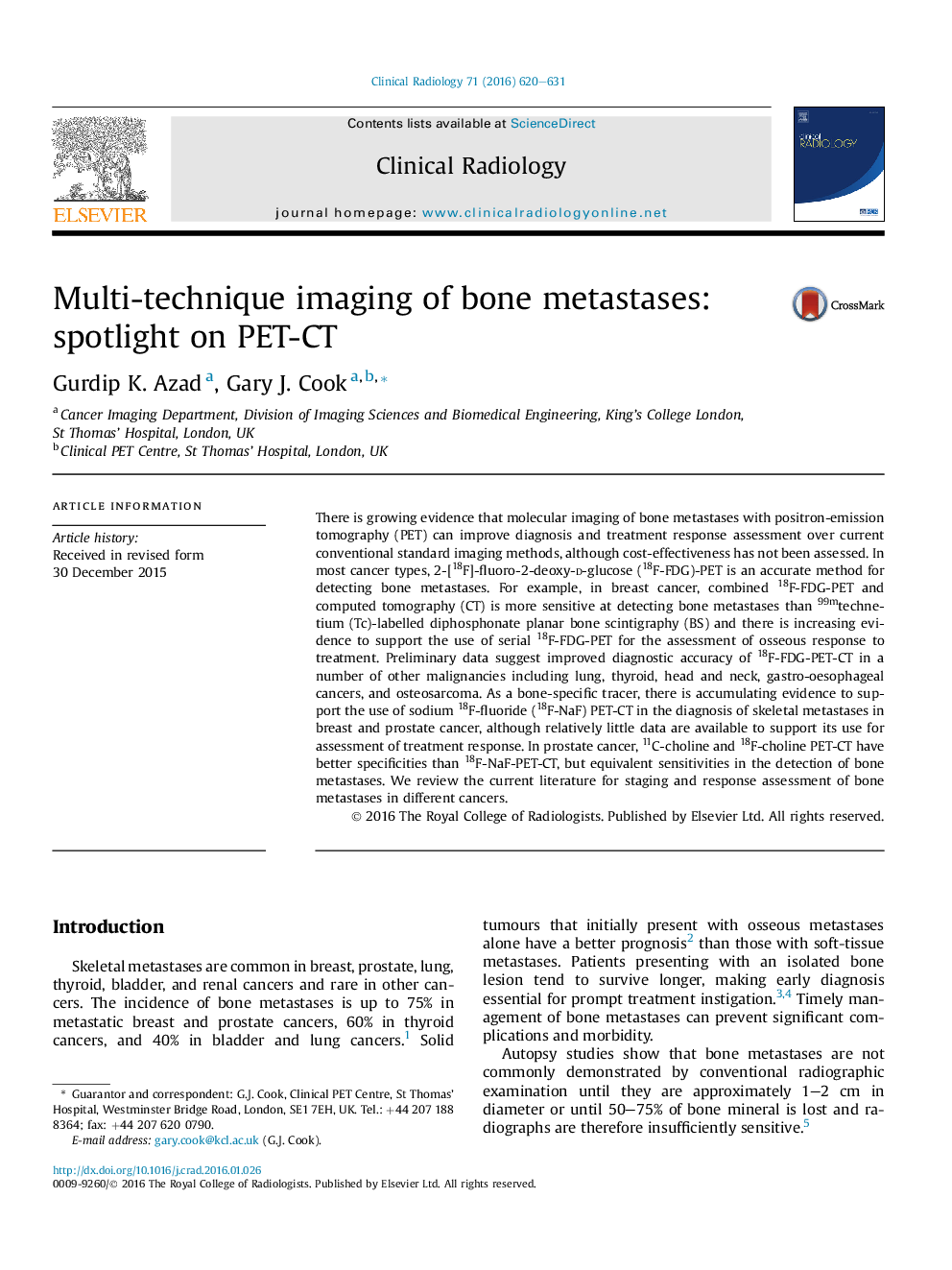| Article ID | Journal | Published Year | Pages | File Type |
|---|---|---|---|---|
| 3981172 | Clinical Radiology | 2016 | 12 Pages |
There is growing evidence that molecular imaging of bone metastases with positron-emission tomography (PET) can improve diagnosis and treatment response assessment over current conventional standard imaging methods, although cost-effectiveness has not been assessed. In most cancer types, 2-[18F]-fluoro-2-deoxy-d-glucose (18F-FDG)-PET is an accurate method for detecting bone metastases. For example, in breast cancer, combined 18F-FDG-PET and computed tomography (CT) is more sensitive at detecting bone metastases than 99mtechnetium (Tc)-labelled diphosphonate planar bone scintigraphy (BS) and there is increasing evidence to support the use of serial 18F-FDG-PET for the assessment of osseous response to treatment. Preliminary data suggest improved diagnostic accuracy of 18F-FDG-PET-CT in a number of other malignancies including lung, thyroid, head and neck, gastro-oesophageal cancers, and osteosarcoma. As a bone-specific tracer, there is accumulating evidence to support the use of sodium 18F-fluoride (18F-NaF) PET-CT in the diagnosis of skeletal metastases in breast and prostate cancer, although relatively little data are available to support its use for assessment of treatment response. In prostate cancer, 11C-choline and 18F-choline PET-CT have better specificities than 18F-NaF-PET-CT, but equivalent sensitivities in the detection of bone metastases. We review the current literature for staging and response assessment of bone metastases in different cancers.
